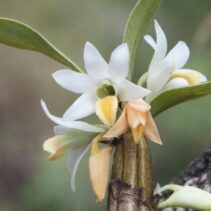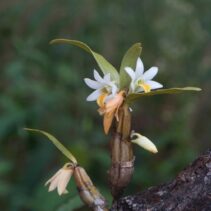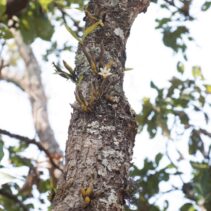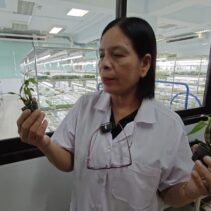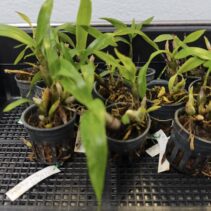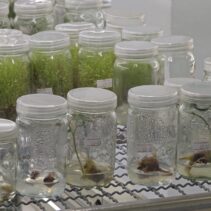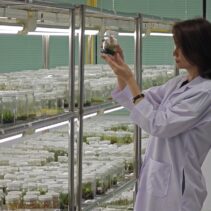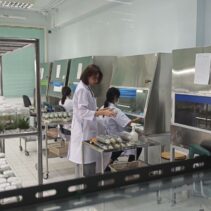Researchers at the Queen Sirikit Botanic Garden in Mae Rim District, Chiang Mai, are continuing efforts to cultivate and propagate “Euang Sae Luang” or “Euang Sae Hom”, one of the orchid species personally cherished and planted by Her Majesty Queen Sirikit, the Queen Mother, at the garden. Propagation is being carried out in laboratories to preserve the genetic line directly from the royal plant, creating a living legacy of Thailand’s forests and honouring the Queen Mother as “the Mother of Biodiversity Conservation.”
Euang Sae Hom is a rare and beautiful orchid known for its long-lasting fragrance, typically found at elevations around 2,000 feet above sea level—especially in Mae Hong Son Province. The Euang Sae orchid is regarded as a precious flower of the Lanna region. In the past, it was one of the rare wild blossoms offered by the Lua people as tribute to the Lanna kings because of its rarity and enduring scent.
During Her Majesty’s royal visit to the people of Mae Hong Son, locals presented her with the Euang Sae Luang. Enchanted by its beauty and fragrance, Her Majesty became concerned about its potential extinction. She then ordered that the orchid be planted at the Queen Sirikit Botanic Garden and initiated a propagation project to ensure its conservation for future generations.
Sujinda Sonpud, Head of the Laboratory Department at the Queen Sirikit Botanic Garden, explained that Euang Sae is a rare orchid with a distinctive and lasting fragrance. Previous research has even shown that its flowers can be used for perfume extraction. Therefore, the propagation project under the royal initiative not only helps conserve a rare species but also supports local livelihoods by creating opportunities for community-based product development.
However, propagation is a challenge as Euang Sae thrives in high-altitude environments above 1,400 metres, where cool winds blow year-round—conditions not found in the the lower-elevations of Queen Sirikit Botanic Garden. Once seedlings are successfully grown in laboratories, however, they will be transplanted to the Romklao Royal Botanic Garden in Phitsanulok Province, where the climate and environment are ideal. The project has made great progress, with a steadily increasing number of plants now thriving.
In addition to Euang Sae Luang, another royal plant, the sugar palm, has also been cultivated. Although the sugar palm has a short lifespan—dying naturally after flowering—the Queen Sirikit Botanic Garden has preserved its seeds from the original royal plant and continues to grow its lineage.
